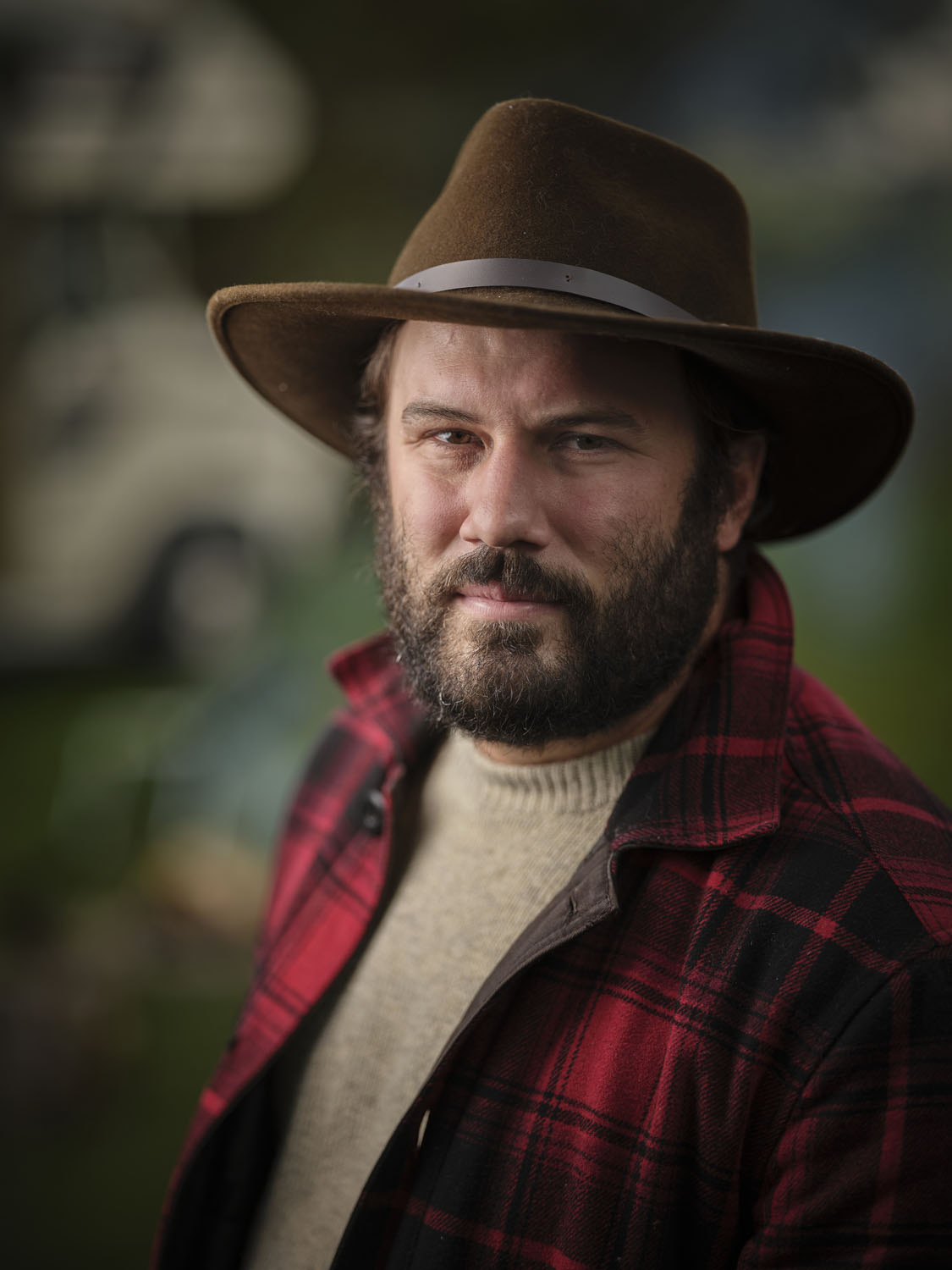
Jonathan Bielaski
Jonathan Bielaski chụp ảnh chuyên nghiệp trong hơn 18 năm, sự nghiệp của anh xuất phát từ thơ ấu, lớn lên với “phòng tối” trong tầng hầm và các máy ảnh luôn trong tầm tay. Kỹ năng của anh được nâng lên trong quá trình chụp ảnh với nhiều nguồn sáng phức tạp và chi tiết công việc sản xuất. Anh đam mê những câu chuyện về con người, như họ là ai hay họ làm gì, từ đó đẫn dắt anh bắt đầu câu chuyện về họ thông qua ảnh chân dung môi trường của mình.
Công việc của Jonathan Keith thường yêu cầu rất cao và anh cũng được quốc tế công nhận là một nhiếp ảnh gia chân dung môi trường hàng đầu. Nhiếp ảnh đã đưa anh đến những địa điểm tuyệt vời và nhiều môi trường làm việc khác nhau, từ sân đấu hay sân trượt, nơi các vận động viên chuyên nghiệp thi đấu, cho đến các mỏ hẻo lánh nơi kim cương tại Canada được khai thác. Anh luôn học hỏi từ những người mình gặp và những câu chuyện họ kể.
Chân dung môi trường cần nắm bắt được bản chất của chủ thể trong môi trường sống tự nhiên. Mỗi một bức ảnh của Jonathan Bielaski đều chứa đựng một câu chuyện về hành trình của một người. Tập trung vào điều này quan trọng hơn con người – đó là sự thật của họ tại một thời điểm trong cuộc sống – nền tảng phản ánh tính cách của họ.
Đôi khi tất cả những gì bạn có là một bức ảnh để nói về một câu chuyện
Being able to do what I love for a living is a gift. Through photography, I have the opportunity to delve into the lives of my subjects, explore their passions, and share their stories with others. It is truly a magical experience. Whenever I am invited into a person’s life for a small window of time I want to make sure I capture what I need as efficiently and effectively as possible. This is why I have chosen to use the FUJIFILM systems. The range of cameras in their GFX line gives me the ability to choose the right tool for the right job, from the compact rangefinder-style of the GFX 50R to the latest stills and motion technology with the GFX100. On top of having a robust selection of cameras FUJIFILM has also provided upstanding after purchase support. Their firmware updates improve the user experience and increase camera longevity.
I was given the opportunity to try out the latest firmware for the GFX system. It is wonderful that they are always improving the cameras that I utilize and depend on time and time again. For a real-world test, I went out with a good friend who is an up-and-coming food stylist to create a set of stills and a motion trailer for his new content channels. I selected specific camera bodies for each setting. I shot the location stills with the GFX 50R for its lightweight and ease of use. I shot location motion with the GFX100 for a cinematic feel and its large sensor. Lastly, I shot studio stills with the GFX100 to capture as much detail as possible.
The firmware has given me new abilities that I have incorporated into my workflow. I will continue to utilize these throughout my location work – especially to make both the production and post-production easier.
The first update is perfect for the shooter that captures a lot of content in a day and transfers large amounts of data. The number of images in a camera folder is now increased from 999 to 9999. This removes the need to merge folders from the day’s shoot to get all your images in one editing folder. This may seem like a small change, but it saves a ton of time and you can quickly verify you have all your images if you are saving to dual cards like I do.
Another small but very useful update is the ability to rate your images in-camera when shooting both RAW and JPEG. These ratings are also compatible with Capture One and Lightroom. You can do quick selects on the fly and have the JPEGs for quick previews to send off to the client right away. I always shoot both JPEG and RAW files because sometimes I need to send images quickly with no edits. The addition of Classic Negative and Eterna profiles for the 50S and 50R streamline this process as well.
The update that I used the most on location is the Low Light Autofocus. In any other circumstance, you would have to upgrade your camera to obtain this feature, however, FUJIFILM has packed a punch in their latest update. They have updated the Low Light Autofocus in all GFX models – Low Light Priority Contrast for the 50S and 50R and Low Light Phase Detection in the 100. They have also updated the Face and Eye detection capabilities. Traditionally, I have found autofocus in medium format cameras to be unreliable. When I switched to the FUJIFILM GFX system I was impressed with the speed and accuracy of the autofocus. I thought it could not get better, but it does with every update. This gives me the ability to concentrate on what I see rather than worrying about technical issues and if the image is in focus or not.
I also tested the firmware update in studio. I mounted the GFX100 to a studio stand and tethered it to a capture station. Needless to say, things were a little more controlled compared to on location. The update gives the ability to change your setting on the capture station remotely and is a very useful addition – especially when you are shooting overhead images like I did for this shoot. The camera was set up high above the working surface and having the ability to adjust at the computer when needed was convenient.
Most of the firmware updates are geared toward still photography but the motion updates are just as important. During this shoot, the GFX100 was the tool of choice. Shooting with the large sensor allows you to create visuals that the other FUJIFILM systems cannot, and the continual improvements in the motion realm are something I look forward to. I shoot almost every commercial project in F-Log. However, when a project requires a quick turnaround, shooting in in the updated film simulations instead of F-Log speeds up the color grading process in post-production. One update I am looking forward to testing is the ability to shoot motion in ProRes RAW. This will greatly impact the color grading workflow and will most likely make the GFX100 our go-to camera for our motion shoots. The updates in autofocus are always key and the in-camera stabilization is amazing. Increased gimbal compatibility for the GFX system will improve the operator experience as well.
Overall, I have loved my experience with the FUJIFILM Medium Format system and it is a key tool for the way I create my content. The fact that FUJIFILM is consistently updating and improving their firmware is a true testament to the commitment they have to the end-user of their products. I look forward to creating many more projects and lasting memories for the people I profile.





















































